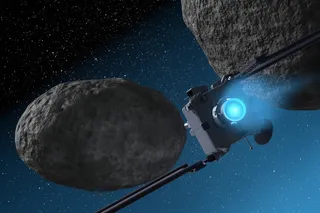When you think of the great court cases in the past century where science meets the law, you're probably thinking about cases like Roe v. Wade or the Scopes Monkey Trial---not Commonwealth v. Fennie. And that's deservedly so, because this latest science-in-the-courtroom case sounds more like science meets clown: A judge passed his verdict after he methodically proved that pizza's state of matter is indeed a solid. It all started last October, when 20-year-old William James Fennie III apparently chucked a pizza slice at a passing car in West Chester, Pennsylvania. He then went on to resist arrest, forcing two officers to Taser him to the ground. Now, based on the fact that Pennsylvania law clearly states that it is illegal to throw "any solid object" toward a roadway, you might think President Judge James P. MacElree's decision was an easy one: After all, it doesn't take a degree in ...
Judge Performs Own Experiments & Rules That Pizza Is, in Fact, a Solid
In Commonwealth v. Fennie, a judge ruled pizza is a solid object, impacting court cases exploring science in law.
More on Discover
Stay Curious
SubscribeTo The Magazine
Save up to 40% off the cover price when you subscribe to Discover magazine.
Subscribe












